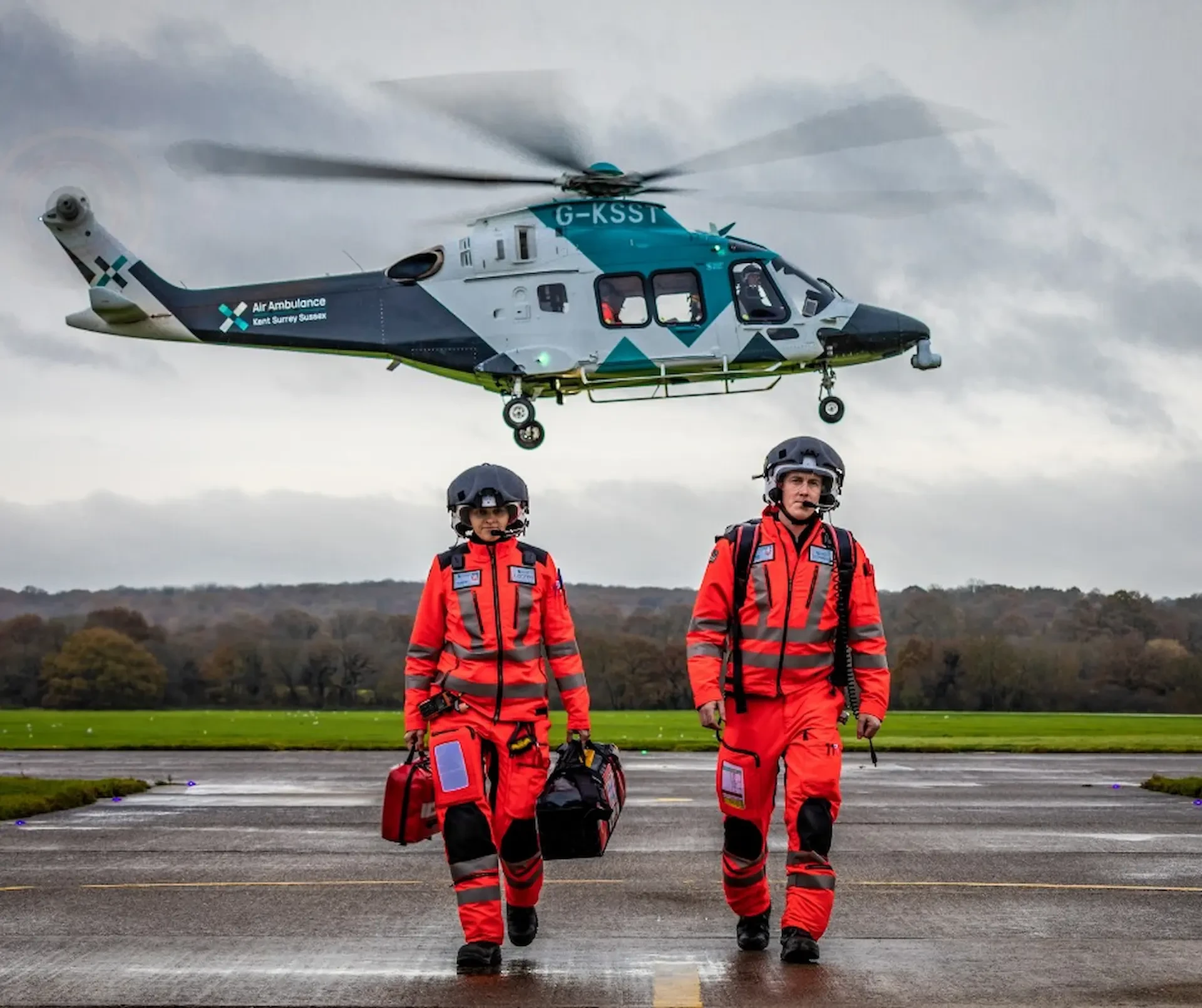Being a female on the Joint Helicopter Force with the world’s tiniest head, I always had issues with the form and fit of my flying helmet. I essentially looked like a 'Chuppa Chump' Lolly pop when wearing it. I was fitted with the smallest helmet available with the maximum amount of padding in it to accommodate my pea sized head (no pea sized brain comments please) within required fitting tolerances. This was, sadly, a hazard of the job. You get a range of sizes based on an average percentile and our long-suffering Safety Equipment fitters (aka 'The Squippers') had to find the ‘best fit’ from that relatively small selection of helmet sizes, and then spend a considerable amount of time adjusting it to my personal needs…. but what if you are biometrically too far to the left or the right of this arc? Outside the traditional '5th to 95th Percentile' which is used by many militaries and other organisations to purchase and qualify equipment and clothing?
All too often, helicopter rearcrew are the bottom of the clothing and equipment 'food chain'. I'm not just talking about militaries here; those employed in the cabin of Search and Rescue, utility and fire-fighting helicopters are often expected to 'make do' with clothing and equipment not optimised for their task, but that which is available 'off the shelf'. In the RAF, the majority of flying kit when I joined was heavily optimised to the needs of Fast Jet or Transport aircrew; the Mk3 Cold Weather jacket (invariably known as the 'Cold and Wet' jacket), for example, finished above the waist to account for sitting in an ejection seat and to accommodate a pair of G-Trousers, which are hardly essential for helicopter rearcrew (though, thinking about it, they might have been useful for flying with 'certain' pilots....!). The jacket therefore didn't contribute to keeping the lower torso warm - though there was a matching set of trousers supposed to do this - and the material, once wet, stayed wet - seemingly for hours. Helmets, life jackets, immersion suits seemed all optimised for a Fast Jet pilot's comfort - and when designed, that was exclusively a male role.
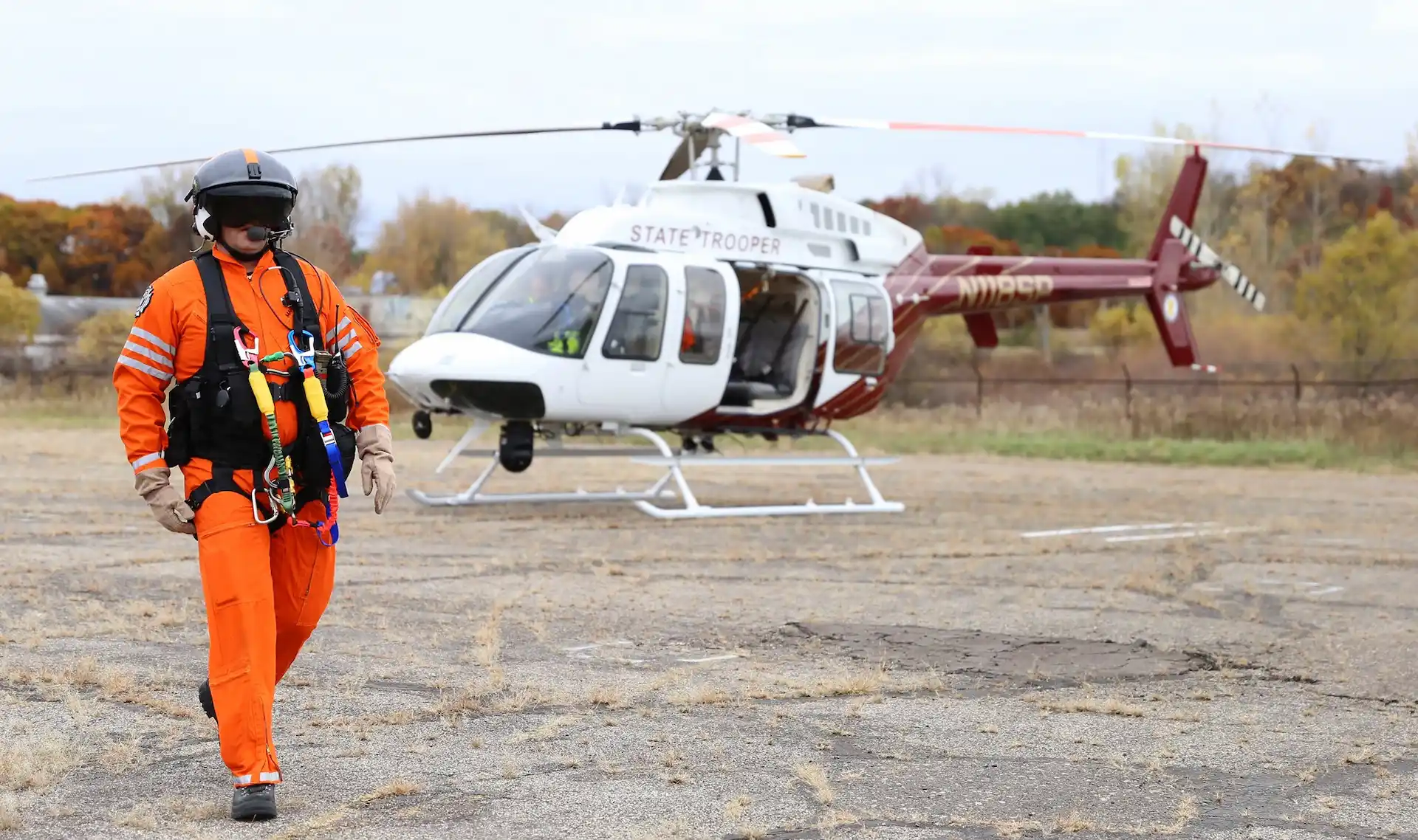
Why is this the case?
The historic lack of civil recognition for the specialist skills of rotary rearcrew may well have something to do with this. Rotary Pilots are (relatively) well catered for, and in some niche areas such as SAR Winchman, the need for the correct equipment is obvious - certainly in terms of harness and immersion clothing. The 'wet helmet' should be seen as a natural extension to this - water ingress into a helmet and microphone can cause all manner of issues on the intercom - potentially sending a painful screech onto the channel that blocks all attempts to talk amongst the crew, leading to a potential danger to platform, crew and third parties. Astonishingly, due to their relative expense, many operators (especially militaries...) try to avoid their responsibilities in this area.
Perhaps more employers should consider the retention benefit of having 'the right kit'?
I spent the majority of my career wearing a windproof smock that made me look like a tramp. Despite being a ‘size small’ the sleeves were about a foot too long and I had to gather it in with the drawstring around my waist to prevent me nearly tripping over the length of it. Now, this is important for two reasons. Firstly, and more practically, excess fabric in a cluttered and crowded helicopter cabin can increase the chances of snagging in both routine and emergency situations. Secondly, trying to retain experienced people is not helped by lowering their self-esteem. I'm not being precious here, but I was bloody proud of my job, and it's hard to feel valued if you look like you're wearing your big brother's cast offs. Good fitting, fit for purpose equipment, is vital for the safe operation of a helicopter in every role, civil or military. If it evokes a sense of pride in one's role, then that can only be a good thing for the entire organisation in terms of retention and performance.
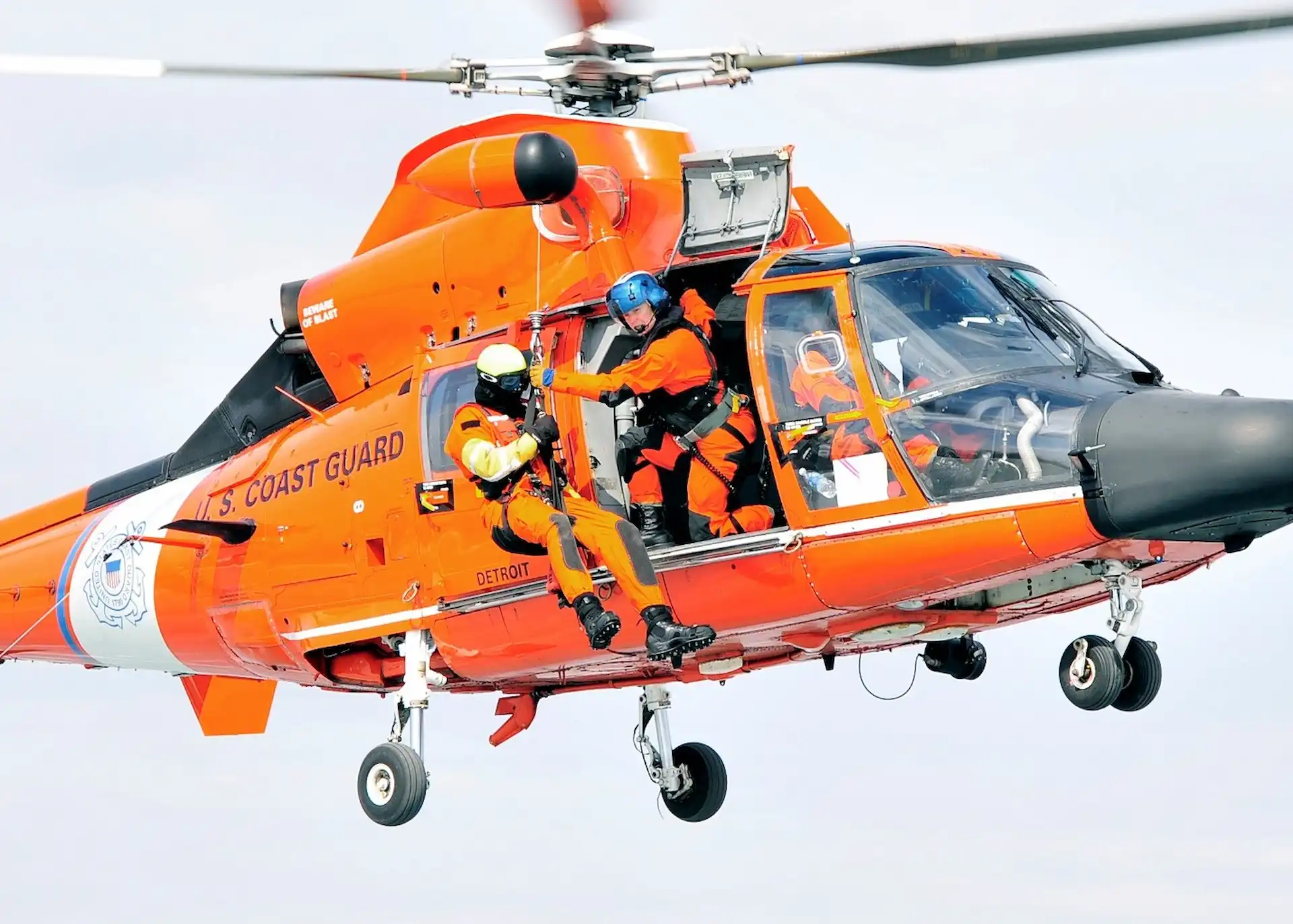
“Lumps in our Jumpers”
The 'smock situation' was essentially caused by a woman having to wear clothing designed for the male form and sizing structure. I remember the very first time I was issued my RAF uniform at Cranwell. One joker on the course (Ex-Navy, obviously) quipped about us ladies getting issued ‘lumps in our jumpers’ which we actually found quite funny at the time….but many years later when being fitted for my Osprey body armour, I did indeed wish it had lumps in it to make it marginally more comfortable for a ten hour tasking day in Afghanistan.
Now although this might sound like a rant about females not being given the right kit, it’s broader than that and is more about those that don’t meet the traditional 'averages' in terms of height and size, those that differ from the perceived norm. There are many other operators out there who are tall, small, wide or beanpole like that suffer from similar problems to me when it comes to the provision of suitable kit. And the sad fact is that some commercial operators, simply can’t afford to cater for each and every one of us. Now, don’t get me wrong, had the RAF ever said sorry we can’t find a helmet that fits you, therefore no helicopter aircrew role for you, I would have been gutted. But it does highlight a valid point. In a Force that prides itself, most recently in fact on its recruitment of a diverse workforce in all respects, surely their kit allocation should reflect this?
Make Do
But as with most things in the military, and more broadly in helicopter aviation, we 'make do and mend'. As a family, rotary operators often seem to take a perverse pride in delivering a high output despite crippling shortcomings in much of what we work with. Certainly, a highlight or possibly lowlight of this mantra, was during the early Afghanistan deployments where we actually had to borrow the outgoing crews flying clothing as there wasn’t enough of the new fire-retardant ensembles for individual issue. There really is nothing better than getting a set of trousers from someone who was ‘there or thereabouts’ your size, which they had been sweating in and routinely getting covered in blood on medical retrievals during the three months prior to your arrival. Imagine having to swap clothes with crews ending a shift during an intense fire, or after a mass casualty event? Delightful. The best we could hope for in Afghanistan was that the distinctly 'used' clothing had the knees and seat intact, was not ripped to shreds and, hopefully, that it actually met your ankle and didn’t resemble ‘board shorts’, as was often the case for me. The crewman I inherited mine from was one of the shortest on the wing; after all, the whole point of Fire Retardant (FR) clothing is to, errr, cover all of your skin in the event of a fire, isn't it?
Yet I must admit that even a hand me down two piece of FR was still better for me than a flying suit. Flying suits are, quite simply, not designed for female needs. Picture the scene, I’m off on a long day tasking and during a refuel have to dash off for a ‘tinkle’. A fairly simple and routine ‘event’ that now sees me have to take off my Load Carrying Jerkin (LCJ - my 'survival vest'), then my windproof smock to then finally get to my flying suit which needs to be fully unzipped and dropped to facilitate ‘said tinkle’ - now imagine doing all this inside a porta loo. A simple ‘wee’ stop could therefore very quickly become something that resembled one of Houdini’s greatest escapes! Add in an immersion suit and you may as well say ‘see you in half an hour Liz’ as I ran off the ramp to find the nearest facilities. And I do remember it being suggested that ‘why don’t I just use the ‘p*ss tube’ situated at the ramp…. well now, let me have a think about that one - 'anatomically challenged' comes to mind. As aviation becomes more open to females in any number of roles, both front and rear crew, operators and manufacturers need to up their game in providing aircrew ensembles optimised for all.
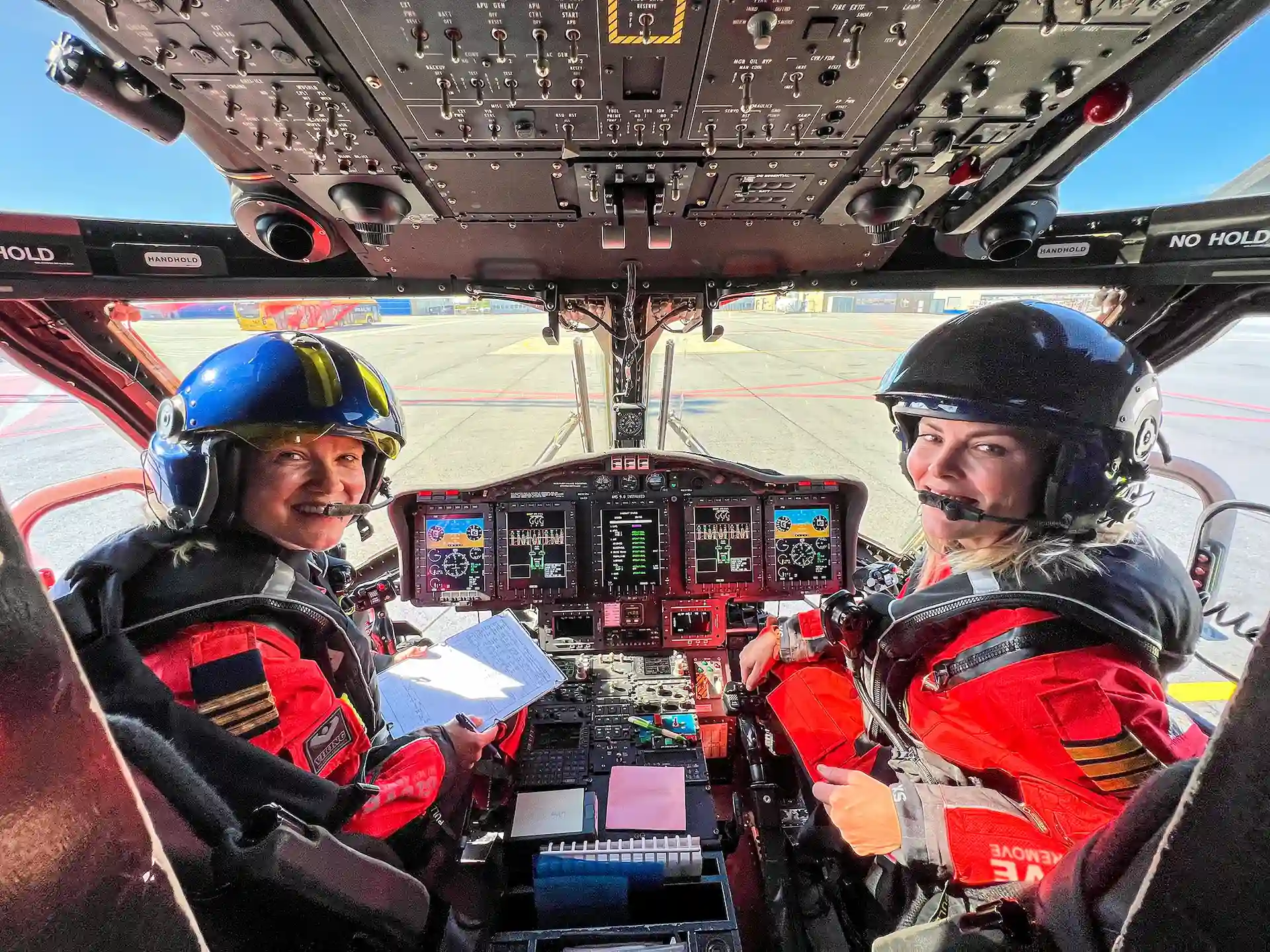
Now just to add some balance, some of the kit we had was spot on the money. What springs to mind particularly were my aircrew flying boots that became comfier than an old pair of slippers. Then after a few years we had many variations of flying boots as Magnum and Nighthawk began to rear their heads. The best way to gauge if kit is good or not, I guess, is how quickly people head into stores to swap it. I kept those old aircrew flying boots until the little circles on the soles were worn through and many of my colleagues did the same, eking out every last inch of life from them, before they were forced to get a new pair. Very much a case of ‘if it ain’t broke, don’t fix it’, but I don’t think in all my time I’ve ever seen the kit procurement process regress back to the good old tried and tested. It very much felt like ‘well we have bought these now, so you’re having them…’. The 'classic' 1965 Flying Boot, so beloved of generations of RAF aircrew, was deemed 'too expensive' to continue to procure, so the 'bean counters' looked for cheaper, 'Off The Shelf' alternatives. Well fitted boots, with appropriate soles/uppers for the environment they are expected to protect the wearer in, are simply a non-negotiable in my book. Sore, wet, and cold feet are a cause of low morale, and, in turn, poor performance.
On reflection, years later, do I look back at what we were given and realise that maybe I should have spoken out sooner. I spent 15 years on the Chinook fleet wearing an oversized bowling ball on my head, which essentially led to the serious neck injury that finally resulted in my Medical Discharge. I also gave myself kidney stones three times, mainly from ‘holding it in too long’. I developed a cold weather injury, from having only a set of leather flying gloves to protect my hands from sub-zero temperatures and 120 knots airflow windchill experienced while operating in the winter skies of Helmand (Afghanistan, though brutally hot in summer, can be extremely cold in winter). The kit we had, often simply wasn’t fit for purpose, and designed for different use in different environmental locations and in different aircraft. Too readily, as is the Support Helicopter force way, we simply ‘put up with it’ and got on with the task at hand (excuse the pun).
Have a think about your kit, role, and circumstances. Are you frequently in pain? What starts as a 'stiff neck' can manifest over time into something far more serious - and, like me, eventually be deemed career ending. It's your responsibility to put your hand up if something is simply not right, and a good employer should listen.
Broken crew
There is an abundance of 'broken' rotary front and rear crew out there who all flew on the same helicopter, many have issues such as Muscular Skeletal Injuries (MSI) of the neck, shoulders and back, although many have not. The main difference I can see is that those who were at the limit, or outside, of the 'normal' percentile had to potentially use kit that wasn’t correctly fitted for them, or, in a broader sense, was not optimised for the role. Much like running a marathon in a pair of trainers that don’t fit, wearing the wrong flying kit day in, day out for years on end, and in my case over 3000 hours flying, will potentially break an individual.
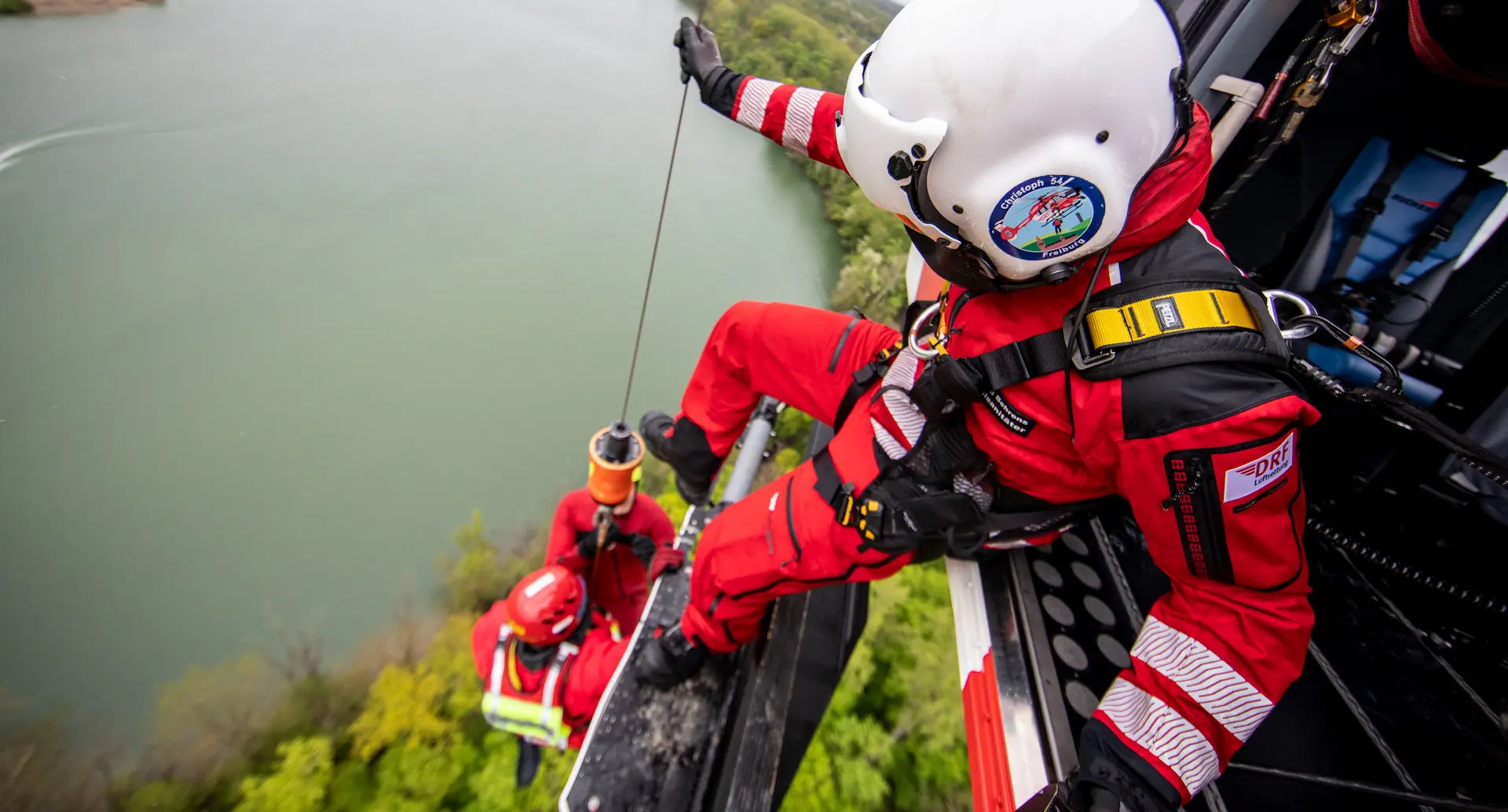
So, again, the emphasis is on us to speak out.
When I finally did put my hand up and report my cold hands, the system kicked in and some heated gloves were trialled and released to service. These gloves that were primarily trialled for me are widely used by many other crewmen who suffer the same ailment. Which goes to prove, if you do speak out, changes for the better CAN happen. Although I initially felt like a ‘burden’, my ‘issue’ did indeed improve things for the better. The UK Chinook Force, as a whole, now wear the lighter Mark 10 helmets that had actually been in service for quite some time, but only filtered to the front-line SH fleet after numerous reports of neck injuries. Yet if none of these had been documented, I wonder how long we would still have been wearing the old MK 4 'human canon ball’ helmets for? And now, thankfully flying suits appear to be a thing of the past for UK military Rotary Crews. I know that will cause some controversy amongst many reading this, but the truth is, for a cabin working environment they just aren’t as practical as a two piece where you can attach a pistol and safety harness, and layer up and layer down quickly depending on how much humping and dumping you’re doing in the cabin! You can always keep a 'grow bag' for beer calls and airshows, so you can show off your badges.
We have a saying when airborne that it is your little pink body on the line so make sure whatever happens, you look after it. The same can be said when on the ground. It’s your little pink body that’s you’re responsible for, and once it’s broken, from personal experience, it’s very hard to fix. The system is there to support you, when used correctly, but is still very much reactive. Personally, I think the military, and civil employers, should invest in their kit early to preserve their people. A set of heated gloves, a well fitted helmet and a comfortable pair of boots are a damn site cheaper than training up an entirely new crewman to fill a gap left by a Medically Discharged crewman with years of experience, or paying up in medical litigation.
Any maybe that’s just it - with experience comes age, and when you’ve had a hard paper round operating helicopters, maybe with experience comes injury; but maybe, just maybe, that doesn’t need to be the case?
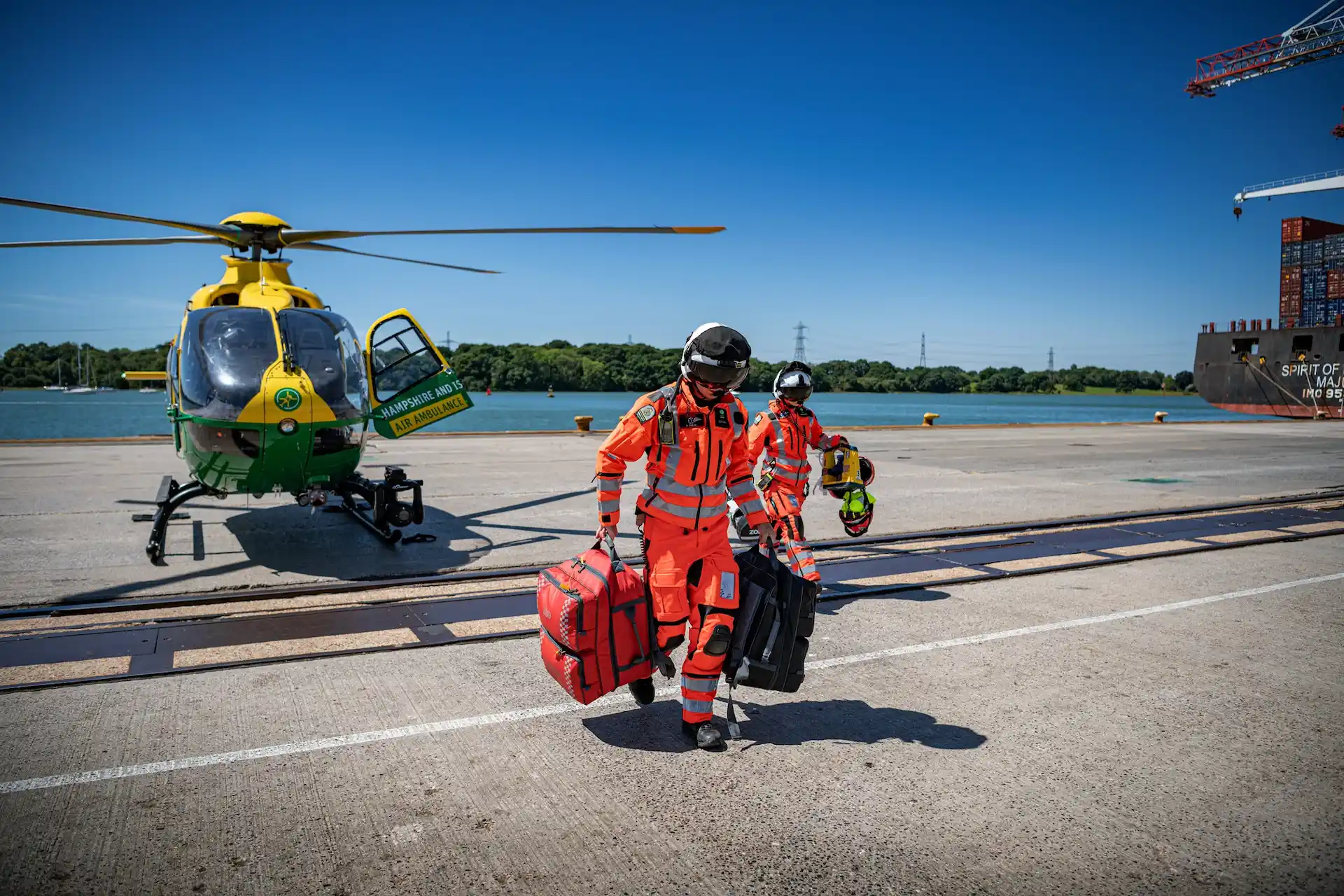
 HOME
HOME


